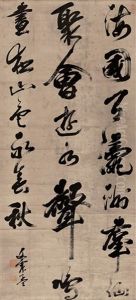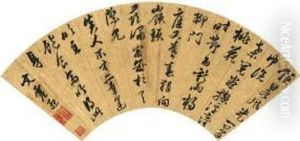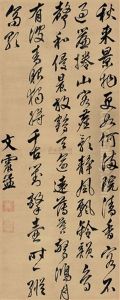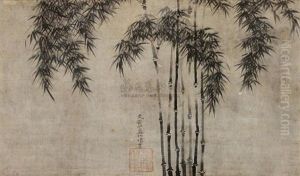Wen Zhenmeng Paintings
Wen Zhenmeng was a Ming dynasty scholar, painter, and calligrapher who lived during a time of significant cultural and artistic development in China. Born into a prominent family in Suzhou, Wen Zhenmeng was related to the famous Wen Zhengming, who was his great-uncle. Wen Zhengming was one of the leading figures of the Wu School of painting, and this connection would have provided Wen Zhenmeng with a rich cultural environment and access to a network of scholarly and artistic figures of the time.
Wen Zhenmeng's own contributions to the arts were primarily in the fields of painting and calligraphy, and he was known to have been influenced by the styles and techniques of his great-uncle. His works often reflected the literati ideals of the period, emphasizing personal expression and the integration of poetry, calligraphy, and painting. However, Wen Zhenmeng is not as widely known as other artists of the Wu School, and as a result, detailed records of his life and the full extent of his artistic output are not as well-documented.
Despite this, Wen Zhenmeng is recognized within the realm of Chinese art history as part of the continuation of the literati tradition. His works are occasionally referenced in discussions of Ming dynasty painting and the cultural milieu of the late Ming period. The literati painters of this era were not professional artists but rather intellectuals and scholars who painted for self-expression and as a scholarly pursuit. Wen Zhenmeng's paintings would have typically featured landscapes, bamboo, and other subjects favored by scholar-artists, rendered with an emphasis on personal style and brushwork.
As with many literati artists, Wen Zhenmeng's life was also likely to have been devoted to scholarly pursuits, including poetry and the study of classics. His artworks, therefore, would have been part of a broader cultural practice that included writing and the exchange of ideas among his scholarly peers. His death in 1636 marked the end of a life immersed in the rich cultural traditions of the Ming dynasty, which would soon give way to the Qing dynasty in the tumultuous years that followed.



